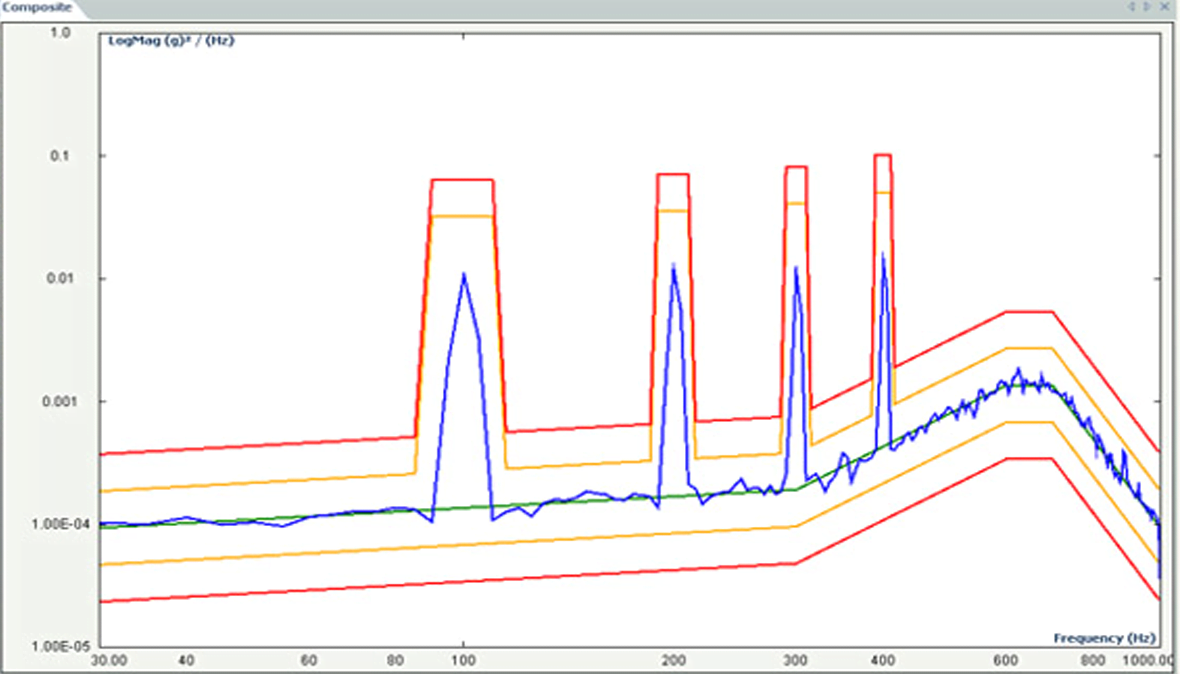Vibration CONTROL profile
Sine-On-Random Vibration control
A vibration controller feature used within a closed-loop test system to simultaneously generate a broadband random signal alongside multiple sinusoids.
Angebot anfordernSine-on-random (SoR) vibration control simulates complex vibration environments with a combination of broadband random excitation and sinusoids or 'tones'. Generally, both signal types are present simultaneously and the tones may either appear at fixed frequencies or sweep over a frequency range.
A typical example is the vibration from an automobile drive train as the vehicle accelerates and the gear ratio is changed; another, is the periodic bursts of ammunition shot from an airborne helicopter.
USE SCENARIOS
- Simulation of vibration characterized by broadband random with one or more superimposed tones
- Gunfire from helicopters or propeller-driven aircraft
- Automobile vibration in the engine, drive train and transmission during speed changes
CHARACTERISTICS
In this type of test profile, the broadband random signal consists of a user-defined breakpoint table of power spectral density (PSD) versus frequency, as with pure random control. Up to 20 sine tones may be concurrently generated; a digital tracking filter is applied to each tone to accurately extract its amplitude from the control feedback signal.
Each tone usually has independently-set amplitude, frequency-sweep range and rate. The user may also specify a sine-sweep profile versus frequency within constant acceleration, velocity and displacement segments. Slopes and crossover points will be automatically calculated by the control algorithm.
A harmonic mode is available, whereby subsequent tones generated are an integer multiple of the first tone’s frequency. To simulate gunfire, sine tone on- and off-periods can be preprogrammed. Multi-sine functionality can be configured by disabling the broadband random, allowing multiple sine-tone excitation only.
SoR includes all of the automatic and manual test controls that are included in the random feature. A separate sine-tone track is usually displayed for each sweeping tone, providing a pre-test validation of the configuration.

Abonnieren Sie unseren Newsletter zum Thema Schall und Schwingung

